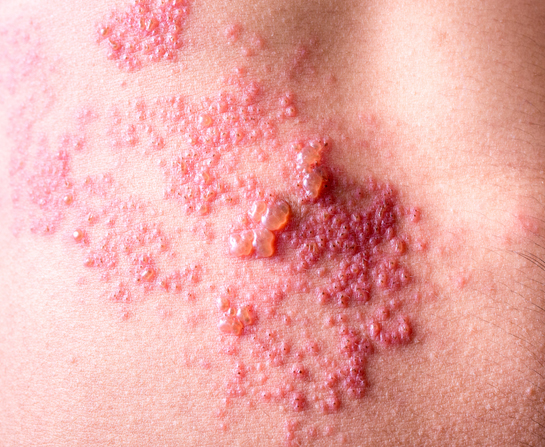The Revenge of Shingles
April 29, 2022 Return

For those of you who have had chickenpox, you must have breathed a huge sigh of relief while thinking to yourself that as terrible your experience with chickenpox was, the days spent trying to hold yourself back from scratching at those itchy rashes littered all over your body are finally behind you (I know I did). But for some, it doesn’t stop there; the rashes may return in another but equally excruciating form: shingles. While the pain from shingles normally disappears within several weeks along with the rashes, there are some who still experience pain long after their rashes have gone away. This condition is known as post-herpetic neuralgia (PHN).
Consultant dermatologist Dr Lee Yin Yin explains, “There’s a 30% lifetime risk for shingles and of those who develop shingles, 10-20% develops PHN. PHN is defined as a significant pain or abnormal sensation which lasts for 120 days or more after the initial rash over an area previously affected by shingles.”
Should you be worried?
Elaborating on PHN, Dr Lee says, “PHN occurs when your nerve fibres are damaged during a shingles attack. Damaged fibres can’t transmit messages from your skin to your brain as they normally do. Instead, the messages become confused and exaggerated causing chronic and often excruciating pain which can last for a long time.” When asked if there are any factors which can increase one’s likelihood of PHN, she warns, “Old age, weakened immunity and pain during the initial stage of a shingles attack are among the risk factors. Also, women have been found to be more prone to PHN than men.”
How can you tell if it’s shingles?
Signs and symptoms to look out for are:
- A burning, shooting, aching or throbbing sensation
- Itchiness in the affected area
- Increased sensitivity to pain
- Experiencing pain when in contact with something that wouldn’t usually hurt.
How dangerous is it?
- Aside from pain, other complications include:
- Depression
- Fatigue
- Appetite & weight loss
- General activity & sleep disturbance
- Cognitive impairment.
How is it treated?
“Drugs from various classes are used in PHN treatment but the classes which have demonstrated consistent efficacy include anti-depressants, local anaesthetics, creams, patches and anti-convulsants,” says Dr Lee.
Is it preventable?
Dr Lee assures, “PHN is preventable with a vaccine. It’s effective as studies show that it reduces shingles incidence by 51.3%, and the risk of PHN by 66.5%. The CDC (Centers for Disease Control and Prevention) recommends the vaccine to all adults aged 60 and above. However, if you’ve had shingles, it’s best you get vaccinated regardless of age.”
If you like this article, do subscribe here.
